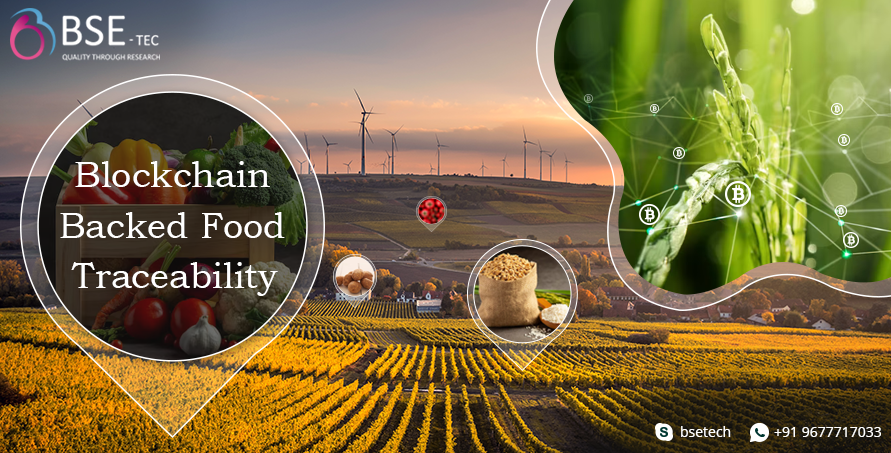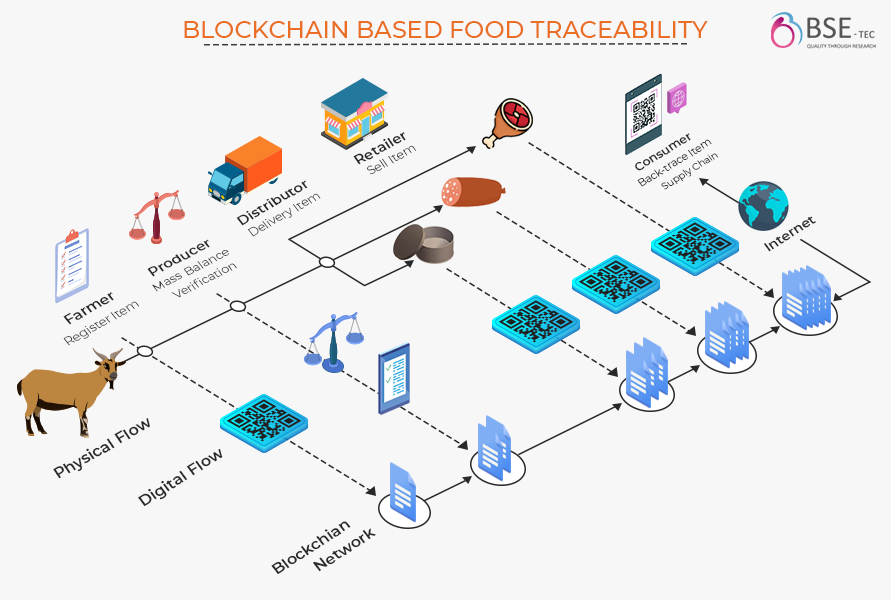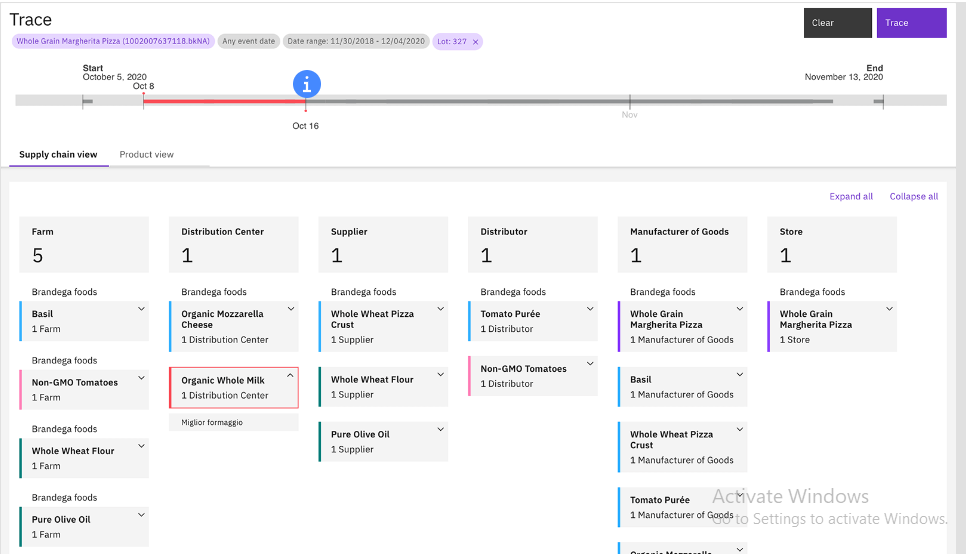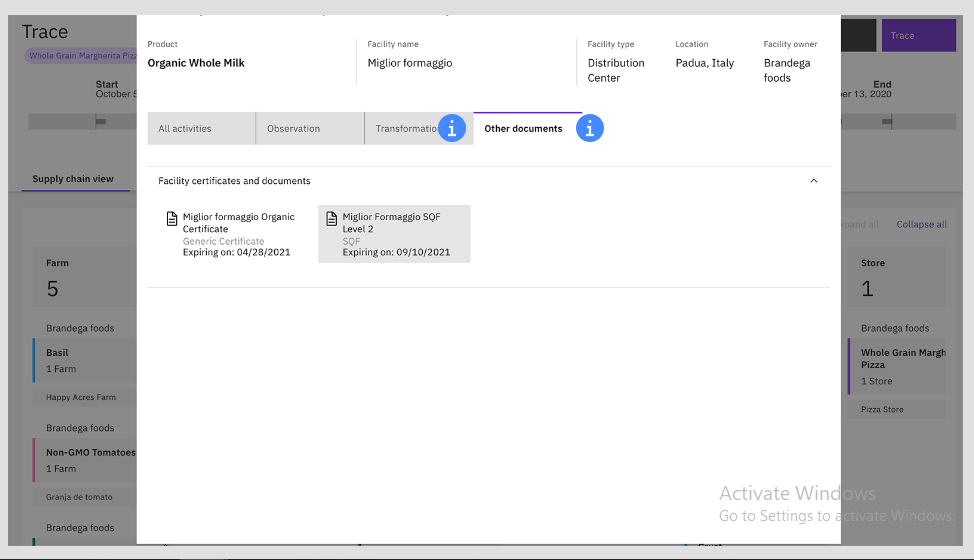Blockchain-Backed Food Traceability [An Overview]

Do you Know?
The average food plate of an American is sourced from 5 different states or countries! Sounds truly like a global affair!
The food on your plate may have travelled hundreds or even thousands of miles before reaching your local grocery store. The current world population is approximately 8 billion. The demand for food supplies within a country is usually not met. To help meet these consumer demands, the United States imports about 15 percent of its overall food supply. But it doesn’t end there! The sourced food should be good and regular compliant with the existing food standards. In reality, this can be tough owing to the complex nature of supply chains. This is where blockchain based food supply chain traceability comes to our rescue.
Why Do We Need Food Traceability?
Have you ever wondered why food traceability is so important? Well, the answer lies in the numerous scandals that have rocked the food industry in recent years, such as the horsemeat scandal. In recent times, consumers want to know where their food is sourced from, just to make sure of the quality!

With proper food traceability and transparency measures in place, consumers can be confident that the food they are consuming is safe and of high quality. Traceability also helps to identify the source of any contamination, which can prevent widespread outbreaks of foodborne illnesses. Overall, food traceability is essential for ensuring transparency and accountability in the food industry.
Why do we need Blockchain for the Supply Chain?
Blockchain can enable $31 billion in food fraud savings globally by 2024 by immutably tracking food across the supply chain, and compliance costs can be reduced by 30%.
Improved Traceability
With blockchain technology, it is possible to track every step of the food supply chain. This means that it is easier to identify the source of any contamination or foodborne illness outbreaks.
Increased Transparency
Blockchain technology allows for transparency in the food supply chain. This means that consumers can easily access information about where their food comes from, how it was produced, and any certifications it has.
Reduced Fraud
Blockchain technology makes it difficult to commit fraud in the food industry. This is because every transaction on the blockchain is recorded and cannot be altered.
Reduced Food Waste
Every year, a third of fresh food is thrown away globally by consumers who are unsure about the quality of their food. – IBM Food Trust. With transparent tracking for each step in the supply chain food wastage due is considerably reduced.
Enhanced Trust
By tracking each step of the food supply chain and sharing data on an immutable ledger, participants can ensure the quality of goods is irrefutable. This increases the trust in the quality of the food and increases brand loyalty making you a trustable brand.
With blockchain, every step from farm to fork is transparent, ensuring trust in what we consume. The future of food safety lies in immutable records.
How Blockchain is Increasing Transparency and Traceability in the Food Supply Chain?

The food supply chain is a complex network of processes and systems that encompasses everything from farming and harvesting crops to processing, packaging, and transporting food (and meat) products to retailers and consumers. It plays a critical role in ensuring that we have access to safe, nutritious, and affordable food. However, the food supply chain is also vulnerable to various challenges like transportation issues, and global distress due to natural calamities. Blockchain can easily help us overcome this issue. The physical flow (transit) of the products is added to smart contracts. The smart contract (in digital flow) automatically registers the flow and helps in tracing the food product from the source to the consumer.
Case Study – Nestle in Blockchain-based Food Supply Chain
Nestle, one of the largest food and beverage companies in the world, has implemented blockchain technology to improve food traceability. By using blockchain, Nestle can track the journey of food products from farm to table, ensuring that they are safe and of high quality. Here is an example of how blockchain traceability works.
Blockchain Food Supply Chain Traceability – Demo
Here are a couple of screenshots from the demo session of IBM’s Trace software module which traces the food supply chain. Tracing a Product includes all the ingredients and where is it sourced from along with other details like manufacturing date and expiry dates.

In addition to this, it also includes all the legal documentation and organic certifications or FSSAI license to prove their authenticity, making it more trustable.

This level of transparency not only benefits consumers but also helps Nestle identify areas for improvement in their supply chain. With blockchain, brands can quickly pinpoint the source of any quality or safety issues and take action to address them.
Explore the benefits of blockchain technology in the food industry, how it is enhancing food traceability and supply chain management, and how it can help your business! Get in touch with us for a blockchain consultation!
Did you find this article useful? Let us know by leaving a comment below, or join us on Twitter and Facebook.




